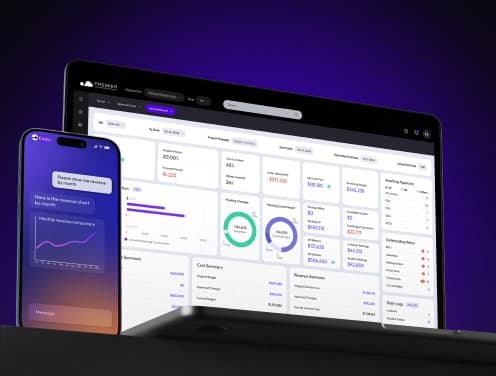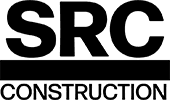
Understanding Construction Risk Management
You don’t need a lifetime’s worth of experience to realize that construction is rife with risk. Worker accidents, materials shortages, weather delays, environmental regulations, and payment disputes are all common risks in construction projects. These factors all play a role in the project’s outcome. That’s why construction risk management is so important. Construction risk management makes it possible to sort through, prioritize, and handle the hazards associated with a project. We’ll take an exploration into this process and how it works so you'll have a better understanding of construction risk management.
What is Construction Risk Management?
Risk management in construction is the process of identifying the hazards associated with a construction project and developing a plan to minimize their impacts. While that’s a very surface-level explanation, risk management is a critical strategy for any firm in the construction industry. Proper risk management ensures that the company’s profits are protected, that its workers are safe and that growth is on the horizon.
While that might sound like a heavy burden, the truth is that risk management is a very simple and systematized process. There are steps to take to identify risks, assess their impact, and put a plan together to minimize the harm they can impart to a project.
Risk Assessment Plans
The following is a simple 6-step process that all industries take to manage risk. Following these steps—with the help of other parties on the construction project—ensures you know what the potential threats are so you can plan an appropriate response.
Step 1: Identify Risks
Companies have to know their risks to plan for them. Unfortunately, risks can feel very fluid and highly varied. But, they ultimately fall into one of the following five categories:
- Financial risks: These are dangers to your company’s cash flow. They can be caused by poor sales, rising labor costs, fraud and theft, material costs, slow payments, bankruptcy, and other issues that can tighten the cap on your cash flow.
- Safety risks: It’s no secret that construction can be a dangerous industry. Accidents resulting in injuries or deaths are far too common. This makes safety risks one of the most common hazards for construction companies.
- Project risks: These risks are those that are common to every construction project. Poor scheduling, delays, change orders, and rework are common types of project risks.
- Legal risks: If ever there was a litigious industry, it’s construction. Lawsuits and legal claims for payment problems, contract disputes, and ownership can put both money and the schedule at risk.
- Environmental risks: Unless you’re building in paradise, harsh weather is a real concern of almost every project. Cold winters can delay project progress while coastal storms and hurricanes can completely undo a project. Both are two examples of how Mother Nature can be a pain in the backside of any construction firm.
It often takes a village to identify all of these liabilities. It’s a wise idea to sit down with designers, general contractors, subcontractors, and owners during the pre-construction phase to identify these risks. However, don’t spend so much time identifying risks when you should be planning to mitigate them.
Step 2: Prioritize Risks
Once you’ve worked with your team to identify all of the potential risks involved with the project, you need to prioritize them. Prioritizing them allows you to tackle the most dangerous risks first to give your project the best chance it has at being a success.
There are two questions to consider with prioritizing risks: what is the likelihood of it happening, and if it does happen, how severe will its impact be on the project? The simple way to do this is to create a 9-box chart for each risk and determine where it falls:
Use the chart to assign the following risk levels:
- High Priority
- Medium Priority
- Low Priority
Again, the goal here is to tackle the higher-priority risks first, then move to medium-priority, and then decide if low-priority risks are worth addressing.
Step 3: Choose Risk Response Strategies
With all of your risks identified and assigned a priority level, it’s time to decide how you’ll respond to each hazard. There are four potential options here:
- Avoid the risk. If the danger is too severe or the team cannot come up with a solution for mitigating it, it may be worth avoiding the risk altogether. Teams can avoid risks by changing the scope of work to cut the risk out or by passing on the project.
- Transfer the risk. Another option is to transfer the impact of the risk to another party. Taking out an insurance policy against that risk is one way to transfer it. Another way to transfer the risk is to include language in the contract that states another party is responsible for the impact should the risk come to fruition.
- Mitigate the risk. Mitigating the risk involves coming up with a plan or system to minimize its impact on the project if it does occur. The best example of risk mitigation is educating and training staff on safe work practices. Another example could be having an off-site, sheltered location for pre-fab work if the weather becomes too difficult to deal with.
- Accept the risk. For small, low-priority risks, it may be worth just accepting that they could happen, and if they do, the company will deal with the impact. Acceptance isn’t an option for just low-priority risks, though. Some higher-priority risks may be worth accepting if the reward associated with the project is great enough.
The route chosen will be determined by many factors. For example, if a firm has warehouse space where they can build prefab walls and structures, they can mitigate weather risks. But, if experience shows that the weather has been too severe during the proposed time frame, avoiding the risk by shifting the timeline might be a better option. If a company has a friendly relationship with an insurance provider, it can transfer nearly all of its medium-to-high-priority risks to creative policies.
Step 4: Implement a Risk Management Plan
The next step in the risk management process is to implement a risk management plan. This plan outlines all of the risks, their priorities, their responses, and the team members responsible for handling them if they occur. The plan should also include the resources that the team member should utilize if the risk were to occur.
For example, let’s say that the company uses builder’s insurance to protect the structure and a fire occurs. The risk management plan should include the person responsible for recovering the losses, the mitigation route (transfer, in this case), and the required documentation (the policy). With the plan in place, the company can quickly recover from this fire, as long as no one has gotten hurt.
Another example might be material delays. The plan would state who is responsible for handling the risk, the method (likely acceptance in this case), and the alternate supplier they can contact to find materials.
Outlining the plan and those responsible for the individual risks allows companies to work faster and more efficiently if one of the risks were to occur and impact the project.
Step 5: Monitor Risks
Construction projects are fluid and constantly evolving. For this reason, project management teams must always be on the lookout for both identified risks and those they might’ve missed. This helps bolster the effectiveness of the risk management plan and that any challenges are handled quickly and efficiently.
Also, risk monitoring allows project teams to communicate and collaborate about these challenges before they sideline the project. If a team member notices an identified risk has caused an issue, or sees a new risk that wasn’t accounted for, they can discuss it with stakeholders to identify solutions.
Also, it’s critical to ensure that any low-priority risks designated for acceptance remain low-priority. If the project evolves and no one notices a low-priority risk climbing the priority chart, there may not be a plan in place. Over time, a small issue might develop into a big one.
Step 6: Report Results
Risk management is a practice that companies can get better at as time goes on. However, it requires in-depth reporting practices to ensure all they have all of the data required. The companies should record the risks that did and did not occur on all their past projects, the impacts those risks had, and the costs associated with transfer or mitigation. Reporting will help construction businesses create better risk priority charts and come up with better management solutions.
The Benefits of Construction Risk Management
It seems obvious that reducing risk and the impact that those risks can have on a project is a good thing. Even so, there are some specific benefits that companies can realize from implementing a construction risk management program.
Faster Responses
There are two ways to respond to a risk event: panic or decisiveness. Construction firms that implement risk management plans have a roadmap to fall back on to recover losses as well as the resources in place for faster responses. Rather than being reactive, these companies can choose to be proactive and avoid delays and cash flow crunches by recovering the loss faster.
Safer, Happier Employees
There’s no denying that worker safety is a huge part of any construction business’s risk management plan. These risks aren’t avoidable or acceptable and transferring risk isn’t good enough to protect workers. Companies will have to adopt better safety practices. Better training, better protective equipment, and protocols that keep workers safe and injury-free tell employees the company cares about keeping them safe and happy.
Better Decision Making
Risk management is a practice and companies will get better the more they implement this strategy. By recording data, analyzing past projects, and using real-time information, construction companies can better tailor their risk response strategies. They’ll have a clearer picture of risk priorities and a complete understanding of the best responses.
Stable, Predictable Profits
One of the greatest benefits of risk management in construction is that it makes profit margins more stable and predictable. In an industry where volatility waylays billions of dollars every year, using these right risk management techniques helps prevent the negative impacts risks can have on the timeline and budget—two key factors to profitability.
How Construction Companies Can Use Software in Risk Management Plans
Risks are only risks until they happen, at which point they become losses. Rather than being reactive to these events, companies can use construction ERP software to track past projects and their profitability. Any events that occurred during those projects can be recorded or uploaded into the document file. This helps track risks and memorializes their impacts on those projects.
As risk management teams assess current risks, they can look back on their data to determine how often these risks occurred and how serious their impacts were. They might even use this data to identify risks they hadn’t accounted for. The team can then better prioritize these risks to determine which are most important to transfer or avoid, and which are best to plan or plan against.
Utilizing a construction ERP platform with cloud-based document management allows users to easily review these projects and all of the policies, plans, reports, and files associated with them. They’ll be able to make better decisions when developing the risk management plan, and they can do so in less time. Make Premier Construction Software your ERP solution. Schedule your demo today.





















